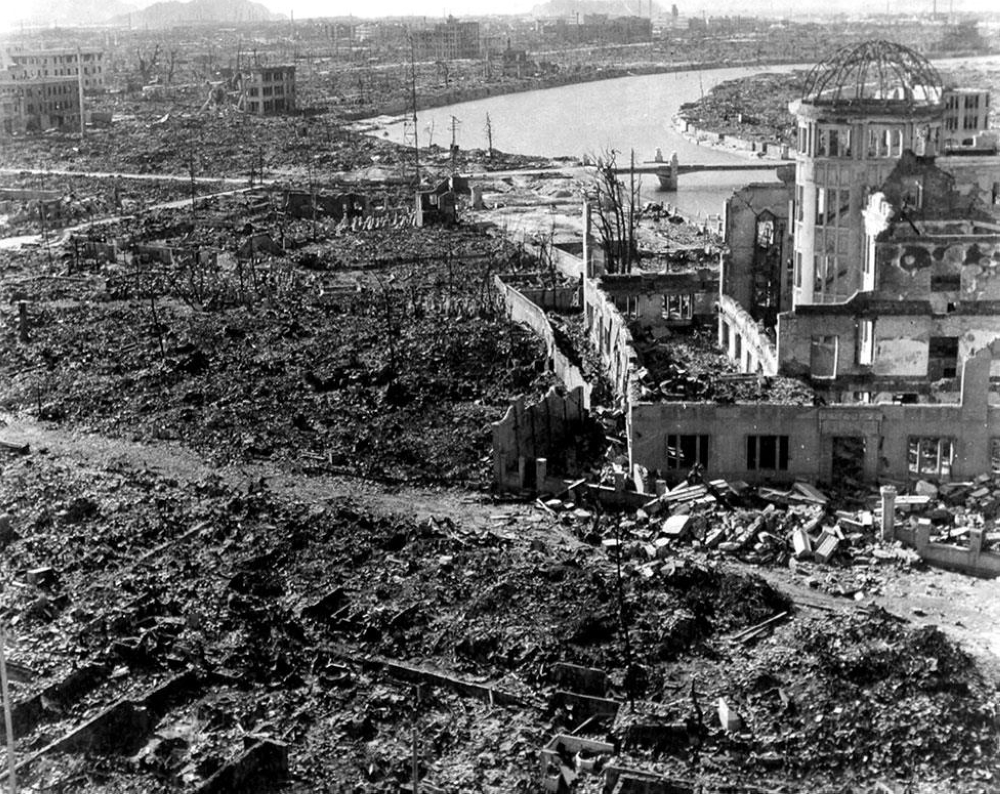In a world where nuclear threats and open wars are escalating, and on the 80th anniversary of the atomic bombing, Hiroshima once again sends a powerful message to the world: “Peace is not built on threats, but on memory, awareness, and the complete abandonment of nuclear weapons.”
On the anniversary of the atomic bombing of Hiroshima, Japan is holding a large-scale ceremony on Wednesday, August 6, 2025, with unprecedented participation from representatives of 120 countries and entities. This comes amid growing international calls to abandon nuclear weapons in light of ongoing wars in Ukraine and crises in the Middle East.
From the Ashes of the Bomb to a Platform for Peace
On August 6, 1945, the United States dropped the first atomic bomb on the city of Hiroshima, killing approximately 140,000 people. Three days later, another bomb was dropped on Nagasaki, claiming the lives of 74,000 more.
After the bombings, Japan surrendered, bringing World War II to an end. However, the shadows of this tragedy still loom large in the world’s collective memory.
This remains the only time in history that nuclear weapons have been used in wartime.
Absence of Nuclear Powers
For the first time, 120 countries and international entities, including the European Union, are attending the memorial ceremony for the atomic bombing in Hiroshima. Notably, major nuclear powers such as Russia, China, and Pakistan are absent. Iran, which is accused of pursuing nuclear weapons, will be officially represented.
This year also marks the first participation of Palestine and Taiwan, although Japan does not officially recognize them. Tokyo clarified that it did not send specific invitations but instead notified all countries and entities of the event’s schedule.
Stop the Arms Race
The mayor of Hiroshima, Kazumi Matsui, stated that the presence of world leaders who “use nuclear force to resolve conflicts” hinders peace efforts, referring to the conflicts in Ukraine and the Middle East.
Matsui called on former U.S. President Donald Trump to visit the city after his controversial remarks comparing the 1945 bombing to recent airstrikes on Iran, saying, “He seems unaware of the meaning of nuclear weapons and their devastating impact on innocent lives and human survival.”
Living Testimonies of Tragedy
In the heart of the modern city, home to over 1.2 million people, the “Atomic Bomb Dome” still stands as a painful and poignant symbol of what happened.
Toshiyuki Mimaki, co-chair of the anti-nuclear organization Nihon Hidankyo and a recipient of the 2024 Nobel Peace Prize,
Hiroshima
Hiroshima is a major city in Japan, tragically known as the first target of an atomic bomb during World War II, which was dropped on August 6, 1945, causing immense destruction and loss of life. Today, it is a symbol of peace and resilience, home to the Hiroshima Peace Memorial Park and the iconic Atomic Bomb Dome, both dedicated to honoring the victims and promoting nuclear disarmament. The city has since been rebuilt into a vibrant urban center while maintaining its commitment to peace education and remembrance.
Nagasaki
Nagasaki is a historic port city on Japan’s Kyushu Island, known for its role as a key trading hub during Japan’s isolation period (1639–1854) when it was the only port open to foreign commerce. Tragically, it became the second city destroyed by an atomic bomb on August 9, 1945, during World War II. Today, Nagasaki is a symbol of peace and resilience, home to memorials like the Nagasaki Peace Park and Atomic Bomb Museum, while also showcasing a unique blend of Japanese and foreign influences in its culture and architecture.
Atomic Bomb Dome
The Atomic Bomb Dome, located in Hiroshima, Japan, is the skeletal ruins of the former Hiroshima Prefectural Industrial Promotion Hall, which was destroyed by the atomic bomb dropped on August 6, 1945. Preserved as a memorial, it serves as a powerful symbol of the devastation of nuclear warfare and a call for peace. Today, it is a UNESCO World Heritage Site and part of the Hiroshima Peace Memorial Park.
European Union
The European Union (EU) is a political and economic union of 27 member states primarily located in Europe, established to foster cooperation and peace after World War II. Originating with the 1957 Treaty of Rome, which created the European Economic Community (EEC), it evolved into the EU with the 1993 Maastricht Treaty, promoting integration through shared policies, a single market, and a common currency (the euro). Today, the EU plays a key role in global affairs, emphasizing democracy, human rights, and sustainable development.
Russia
Russia, the largest country in the world, spans Eastern Europe and Northern Asia, with a rich history dating back to the 9th-century Kievan Rus’. It became a major global power under the Russian Empire (1721–1917) and later the Soviet Union (1922–1991), playing a pivotal role in 20th-century geopolitics. Today, Russia is known for its vast landscapes, iconic cultural sites like the Kremlin and Red Square, and contributions to literature, music, and science.
China
China, one of the world’s oldest civilizations, has a rich history spanning over 5,000 years, marked by dynastic rule, philosophical traditions like Confucianism, and innovations such as paper and gunpowder. Today, it is a global power known for its blend of ancient cultural heritage—including landmarks like the Great Wall and the Terracotta Army—and rapid modernization. Its diverse landscapes, from bustling megacities to serene rural regions, reflect its enduring cultural and historical significance.
Pakistan
Pakistan, established in 1947 as a homeland for Muslims in South Asia, is a country with a rich cultural heritage spanning ancient civilizations like the Indus Valley (Mohenjo-Daro, Harappa). It is known for its diverse landscapes, from the Himalayas to the Arabian Sea, and its blend of Islamic, Persian, and regional traditions. Key historical sites include Lahore’s Mughal-era Badshahi Mosque and the ancient ruins of Taxila, reflecting its role as a crossroads of empires and religions.
Iran
Iran, historically known as Persia, is a country in Western Asia with a rich cultural heritage dating back thousands of years. It was home to one of the world’s earliest civilizations and later became the center of the powerful Persian Empire, renowned for its contributions to art, science, and architecture. Today, Iran is known for its historic sites like Persepolis, stunning Islamic architecture, and vibrant traditions in poetry, music, and crafts.






